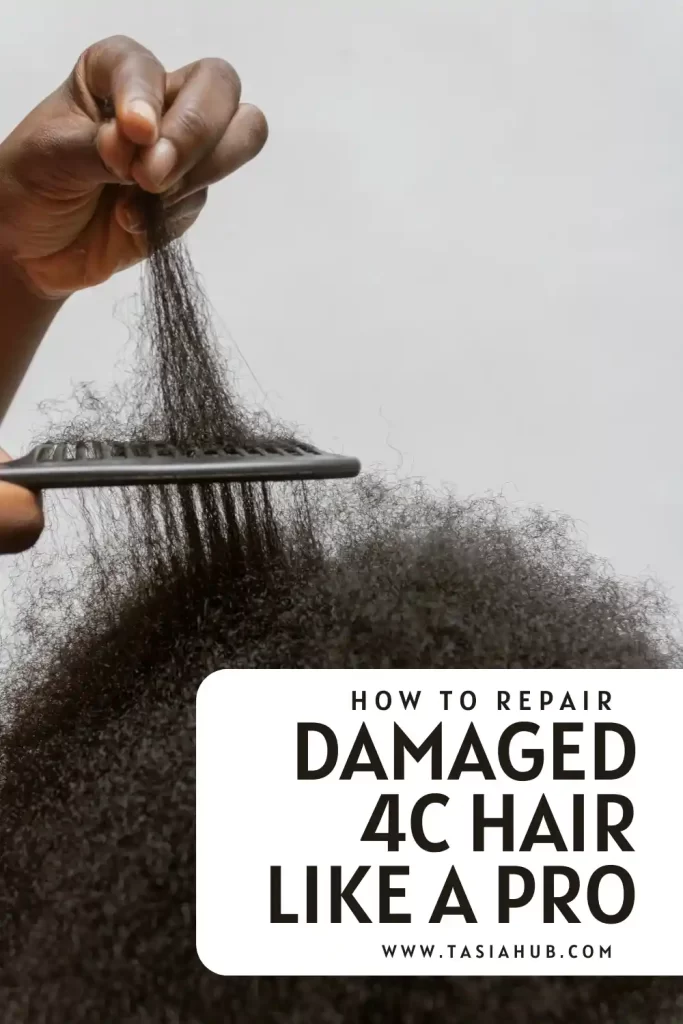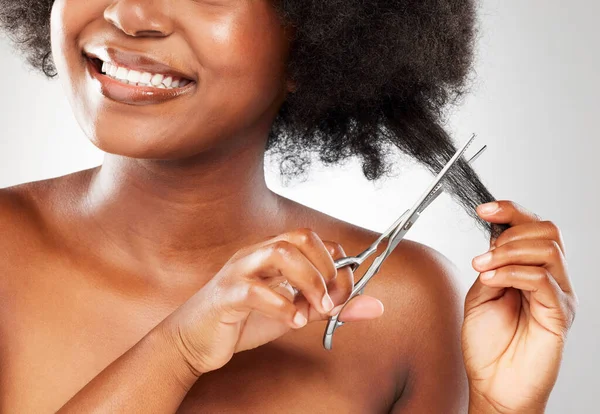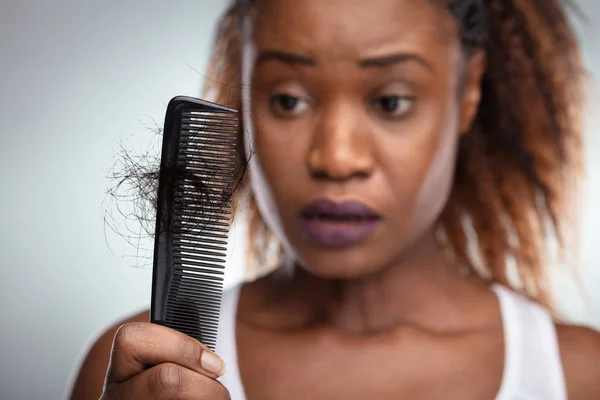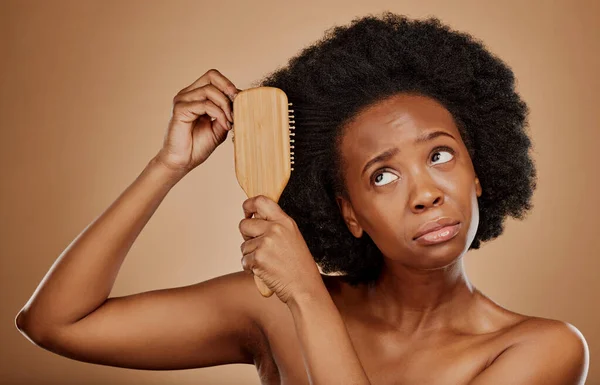How To Repair Damaged 4C Hair Like A Pro

How To Repair Damaged 4C Hair
Embark on a journey to revive and rejoice in the beauty of your 4C hair, as we unveil the ultimate guide on how to repair damaged 4C hair.
In the realm of natural hair care, the quest for healthy and vibrant curls often begins with the recognition of hair damage – a shared narrative for many Naturalistas.
Perhaps you, like countless others, have suffered the aftermath of chemical treatments or grappled with the consequences of heat styling on your 4C hair.
Fear not, for you are not alone in this pursuit of restoration. Our mission is to usher you into a community that understands the unique challenges of 4C hair, where damaged coils are not just a setback but a canvas for transformation.
In a world where tight curls and coils demand specialized care, we invite you to explore the art and science of nurturing your 4C hair back to life. Welcome to a journey that transcends damage, embracing the power to repair, rejuvenate, and celebrate your beautiful, resilient 4C curls.

How To Repair Damaged 4C Hair
In the next parts, we’ll explore a complete guide to not only fix your curls but also give you the info and habits you need for keeping your hair healthy. We’ll cover everything from what causes the damage to ways you can transform and repair your 4C curls, so you can bring back their vibrancy and strength.
1. Choosing the Right Shampoo for Damaged Hair
Embarking on the journey to repair damaged hair begins with a crucial foundation – the right shampoo. Selecting a shampoo tailored to the needs of damaged hair lays the groundwork for effective recovery.
Look for a shampoo specifically formulated for damaged or dry hair, enriched with nourishing ingredients that promote hydration and repair. Ingredients such as keratin, argan oil, and biotin can work wonders in revitalizing damaged strands.
Prioritize sulfate-free formulations to avoid stripping the hair of essential oils, which is particularly important for maintaining moisture in damaged 4C hair.
A gentle, yet potent, shampoo sets the stage for subsequent repair steps, ensuring your damaged locks receive the care they deserve from the very start of your hair care routine.
2. Get Regular Trims
Regular trims stand as a fundamental pillar in the quest for healthy and vibrant 4C hair. This practice plays a pivotal role in preventing split ends, one of the common adversaries of curly hair.
Split ends occur when the hair shaft’s protective outer layer, (the cuticle) is compromised, leading to the splitting of the hair strand. If left unaddressed, split ends can travel upward, causing more significant damage and hindering hair growth.
Trimming is not merely about removing damaged ends; it’s a proactive measure to preserve the overall health and integrity of your 4C locks.
By regularly snipping away the damaged portions, you create an environment conducive to healthier growth, minimizing the likelihood of breakage and promoting a fuller, more robust mane.

How Often to Trim:
The frequency of trims depends on individual hair growth rates and styling practices. As a general guideline, aim for a trim every 8 to 12 weeks. However, closely monitor the condition of your hair.
If you notice split ends or increased breakage, consider more frequent trims. Additionally, those who engage in frequent heat styling or chemical treatments may benefit from more regular trims to counteract potential damage.
3. Protein Treatment Therapy
Protein treatments play a vital role in hair repair by infusing the hair with the building blocks it needs to restore and reinforce the damaged cuticle.
These treatments typically contain proteins such as keratin, collagen, or hydrolyzed wheat protein, which are known for their ability to strengthen and fortify the hair shaft. By replenishing lost protein, these treatments work to repair, reconstruct, and enhance the overall health of 4C hair.
4. Embrace Regular Deep Conditioning
The Benefits of Deep Conditioning for 4C Hair Repair
1. Intense Moisture Infusion:
One of the primary benefits of deep conditioning for 4C hair repair lies in its ability to provide an intense infusion of moisture. The tightly coiled structure of 4C hair makes it prone to dryness, and deep conditioning serves as a potent remedy by penetrating the hair shaft, restoring moisture balance, and preventing further damage caused by dehydration.
2. Enhanced Elasticity:
Deep conditioning contributes to the elasticity of 4C hair, allowing it to stretch and bounce back without breaking. This is particularly crucial for managing the delicate nature of 4C curls, reducing the risk of breakage during styling and detangling.
3. Reduced Breakage and Split Ends:
By fortifying the hair shaft with essential nutrients and moisture, deep conditioning helps minimize breakage and split ends. It strengthens the hair’s structure, creating a protective barrier that reduces the likelihood of damage, resulting in healthier and more resilient strands.
4. Improved Manageability:
4C hair can be prone to tangling and knotting, leading to challenges in manageability. Deep conditioning softens the hair, making it more pliable and easier to detangle. This, in turn, facilitates smoother styling experiences and reduces the risk of mechanical damage during grooming.
5. Revitalized Curl Definition:
Deep conditioning contributes to the revitalization of natural curl patterns. Well-moisturized and nourished curls showcase the enhanced definition, promoting a visually appealing and vibrant appearance.
6. Strengthening Weak Areas:
Areas of 4C hair that are more susceptible to weakness, such as the ends and the hairline, benefit significantly from deep conditioning. Regular treatments strengthen these weak areas, reducing the likelihood of breakage and fostering overall hair health.
7. Prevention of Protein Loss:
Deep conditioning treatments often contain proteins that help replenish and repair damaged areas of the hair shaft. This prevents excessive protein loss, a common issue in damaged hair, and contributes to the overall structural integrity of 4C hair.
8. Restoration of Natural Shine:
Damaged 4C hair may lose its natural luster due to dryness and environmental stressors. Deep conditioning imparts a healthy sheen by nourishing the hair cuticle, restoring its natural shine and vibrancy.
9. Optimal Product Absorption:
Well-moisturized hair is more receptive to product absorption. Deep conditioning preps the hair to absorb subsequent styling products, ensuring that leave-in conditioners, oils, and styling creams are effectively utilized for maximum benefit.
10. Stress Reduction for the Hair:
Environmental factors, heat styling, and chemical treatments can induce stress on 4C hair. Deep conditioning provides a respite, offering a spa-like experience for the hair that soothes and rejuvenates stressed strands.
Incorporating deep conditioning into your regular hair care routine is a transformative step in the repair and maintenance of 4C hair. It is a ritual that not only addresses existing damage but also serves as a proactive measure to fortify and cherish your unique curls.

5. Moisturize Daily
Daily moisturizing stands as a cornerstone in the journey to repair and revive 4C hair. The unique coil pattern of 4C hair makes it more prone to dryness, and consistent hydration is the key to unlocking its full potential. Here’s why daily moisturizing is crucial for 4C hair repair:
1. Combatting Dryness:
The tight coils of 4C hair make it challenging for natural oils to travel along the hair shaft, leading to dryness. Daily moisturizing replenishes lost moisture, combating dryness and preventing the brittleness that can contribute to breakage.
2. Preventing Breakage and Split Ends:
Well-moisturized hair is more elastic and less prone to breakage. Daily moisturizing helps prevent split ends and minimizes the risk of breakage during styling, detangling, and everyday wear and tear.

3. Maintaining Elasticity:
Elasticity is crucial for 4C hair, especially considering its fragile nature. Regular moisture infusion maintains the hair’s elasticity, allowing it to stretch and bounce back without snapping, contributing to overall resilience.
4. Enhancing Manageability:
Moisturized hair is more pliable and easier to manage. Daily moisturizing reduces tangling and knotting, making detangling sessions smoother and styling more manageable.
5. Preserving Curl Definition:
4C hair boasts unique and beautiful curl patterns that can lose definition when dehydrated. Daily moisturizing revitalizes and defines natural curls, ensuring they maintain their distinctive shape and vibrancy.
6. Protecting Against Environmental Stressors:
Environmental factors such as sun exposure, wind, and pollution can contribute to dryness and damage. Daily moisturizing creates a protective barrier, shielding 4C hair from these stressors and maintaining its health in various climates.
7. Facilitating Product Absorption:
Well-moisturized hair is more receptive to other products. Daily moisturizing creates an optimal foundation for the absorption of leave-in conditioners, oils, and styling products, enhancing their effectiveness.
8. Promoting Overall Hair Health:
Consistent moisture is a key component of overall hair health. Daily moisturizing nurtures the hair from root to tip, promoting a healthy scalp and contributing to the longevity and vitality of 4C hair.
9. Preventing Excessive Dryness Between Washes:
In between washes, 4C hair can experience dryness, leading to potential damage. Daily moisturizing helps maintain hydration levels, preventing excessive dryness and ensuring the hair remains supple and resilient.
10. Establishing a Healthy Hair Care Routine:
Incorporating daily moisturizing into your routine establishes a proactive approach to hair care. It transforms moisturizing from a reactive measure to a consistent practice, creating a foundation for ongoing repair and maintenance.
6. Steer Clear From Heat Styling Tools
Lastly, steer clear from heat-styling tools, such as flat irons and curling wands, which can subject 4C hair to high temperatures that can strip it of its natural moisture. By avoiding heat styling, you mitigate the risk of heat damage, preventing dryness, breakage, and overall damage to your delicate curls.
Understanding the Causes of 4C Hair Damage
To embark on a successful journey toward repairing damaged 4C hair, it’s crucial to grasp the diverse factors that contribute to its vulnerability. Our tight coils, though resilient, can be significantly impacted by a range of elements. Let’s delve into these culprits:
1. Heat Styling:
The regular use of heated styling tools, such as flat irons and curling wands, can wreak havoc on 4C hair. High temperatures strip the hair of its natural moisture, leading to dryness, brittleness, and eventually breakage. The repeated application of heat without proper protective measures is a common cause of damage in 4C hair.
2. Harsh Chemicals:
Chemical treatments, including relaxers and perms, can alter the structure of 4C hair. These treatments often contain strong chemicals that break down the natural bonds in the hair shaft, leaving it weakened and more susceptible to damage. Overlapping or frequent application of these chemicals exacerbates the risk, compromising the integrity of the hair.
3. Environmental Factors:
Environmental stressors, such as sun exposure, wind, and pollution, can adversely affect 4C hair. Ultraviolet (UV) rays from the sun can lead to dryness and color fading, while pollutants and airborne particles contribute to the accumulation of debris on the hair, making it more prone to breakage. Protective styling and the use of hair accessories can mitigate the impact of these environmental stressors.
4. Improper Handling and Styling:

The unique structure of 4C hair demands careful handling and styling. Rough detangling, excessive tension from tight hairstyles, and the use of inappropriate hair accessories can contribute to breakage and split ends. Understanding proper care techniques and choosing suitable styles are essential for maintaining the health of 4C hair.
5. Lack of Moisture:
The natural coil pattern of 4C hair makes it more challenging for the scalp’s natural oils to travel along the hair shaft. As a result, 4C hair is prone to dryness. Insufficient moisture can lead to brittleness and breakage, emphasizing the need for regular hydration through deep conditioning and moisturizing routines.
Identifying Signs of Damage in 4C Hair
Understanding the visual and textural cues that indicate damage in 4C hair is crucial for effective hair care. For those with 4C hair, recognizing these signs becomes an empowering step in the journey to repair and restore. Here’s how to identify potential damage:
1. Visual Cues To Identify Hair Damage:
- Split Ends: Examine the ends of your hair strands for splits, fraying, or hair fibers separating into two or more strands. Split ends are a clear indicator of damage and signal the need for attention.
- Thinning and Breakage: Noticeable thinning along the length of your hair or the presence of shorter strands amidst the longer ones may signify breakage and weakened hair.
- Dullness: Healthy hair has a natural sheen. If your 4C hair appears dull, lacks luster, or seems less vibrant than usual, it could be an indication of damage.
2. Changes in Texture To Identify Damage:
- Rough or Brittle Texture: Damaged 4C hair may feel rough or brittle to the touch. Run your fingers along the strands, and if you encounter resistance, it could suggest that the hair lacks flexibility and is more susceptible to breakage.
- Loss of Elasticity: Healthy hair has elasticity, allowing it to stretch and return to its original state. If your hair feels less elastic and snaps easily when pulled, it may be a sign of damage.
3. Common Symptoms Of Damaged 4C Hair:
- Excessive Shedding: While some shedding is normal, an increase in hair in your comb, brush, or on the bathroom floor may indicate a problem. Excessive shedding can be a symptom of damage or underlying issues.
- Itchy or Irritated Scalp: Damage can extend to the scalp, leading to irritation, itching, or discomfort. If you notice changes in your scalp health, it’s essential to address them promptly.
- Inconsistent Curl Pattern: A noticeable alteration in your natural curl pattern, such as looser curls or a change in the overall shape, may be a sign of damage. Pay attention to any deviations from your usual curl structure.
4. Manageability Challenges To Identify Damage:
- Increased Difficulty in Detangling: If detangling becomes more challenging than usual and results in increased hair breakage, it could indicate damage. Healthy hair should be more manageable during the detangling process.
- Resistance to Styling: Damaged hair may resist styling efforts, making it harder to achieve desired looks. If your hair no longer responds well to your usual styling routine, it may be a sign of underlying damage.
5. Texture Discrepancies Between Strands To Identify Damage:
- Inconsistencies in Curl or Coil Patterns: Compare different sections of your hair. If you notice variations in the curl or coil patterns between strands, it could indicate that some areas are more damaged than others.
Taking Action:
Identifying signs of damage in 4C hair is the first step toward implementing an effective repair and restoration plan. Regular assessments and a proactive approach to hair care enable you to address concerns promptly, promoting the health and resilience of your unique curls.
If you notice any of these signs, consider adjusting your hair care routine and incorporating targeted treatments to nurture and revitalize your 4C hair.
Best Pick Products For Damaged 4C Hair
In addition to the above tips to repair damaged 4C hair, it’s recommended you use products specifically designed to repair damaged 4C hair. These include shampoos, conditioners, and styling products.
Can Damaged Hair Be Repaired?
Yes, you can repair damaged hair, but it depends on how damaged it is and how well you take care of it. Follow the tips mentioned above to safely and gradually repair your damaged hair.
Can Damage 4C Hair Grow?
Yes, damaged 4C hair can still grow, but its growth potential depends on how well it’s cared for during the repair process. Regular trims to remove split ends, deep conditioning for moisture, and a protein-rich routine contribute to healthier strands.
Gentle practices, such as avoiding excessive heat and being mindful during detangling, further support growth. While damaged hair won’t miraculously transform overnight, consistent care and patience can encourage gradual improvement and contribute to the overall health and length of 4C hair.
Does Healthy Eating Help Damage Hair?
Yes, eating food rich in nutrients helps in repairing damaged hair. The health of your hair is intricately connected to your overall well-being, and maintaining a balanced, nutrient-rich diet can significantly contribute to the repair and vitality of damaged hair.
Here’s why healthy eating is a key factor in promoting the health of your locks:
1. Essential Nutrients for Hair Health:
- Protein: Hair is primarily composed of protein, and a deficiency can lead to weakened brittle strands. Incorporating lean sources of protein, such as fish, poultry, beans, and nuts, supports hair structure and repair.
- Vitamins (A, C, E): These vitamins are antioxidants that contribute to scalp health and support the production of sebum, the natural oil that moisturizes the scalp and hair.
- Biotin (B7): Biotin is known to promote hair growth and strengthen hair. Foods like eggs, nuts, and leafy greens are rich sources of biotin.
2. Omega-3 Fatty Acids:
- Found in fatty fish, flaxseeds, and walnuts, omega-3 fatty acids contribute to scalp health and hydration. A well-hydrated scalp is essential for preventing dryness and promoting overall hair health.
3. Iron and Zinc:
- Iron is crucial for the proper oxygenation of hair follicles, and zinc supports the hair’s repair cycle. Incorporate lean meats, legumes, and dark leafy greens to ensure an adequate intake of these essential minerals.
4. Hydration for Hair Moisture:
- Water is essential for overall hydration, including that of your hair. Staying well-hydrated helps prevent dryness and promotes the flexibility and resilience of hair strands.
5. Collagen Formation:
- Collagen is a protein that provides structure to the hair. Foods rich in vitamin C, like citrus fruits and berries, support collagen formation and contribute to hair strength.
6. Antioxidant-Rich Foods:
- Antioxidants help combat oxidative stress, which can contribute to hair damage. Including a variety of colorful fruits and vegetables in your diet provides a range of antioxidants to support overall health.
7. Avoiding Excessive Sugar and Processed Foods:
- Diets high in refined sugars and processed foods can contribute to inflammation, potentially impacting the health of hair follicles. Opting for whole, nutrient-dense foods supports overall well-being.
8. Balanced Diet for Overall Well-Being:
- A balanced diet that includes a variety of nutrients not only supports hair health but also contributes to overall well-being. A healthy body is better equipped to repair and maintain the health of its various systems, including hair.
Taking Action:
Healthy eating is a holistic approach to supporting your body, including your hair. While it’s not a quick fix for damaged hair, adopting a nutrient-rich diet can contribute to the long-term health and vitality of your locks. Consider consulting with a healthcare professional or a registered dietitian to tailor a diet plan that meets your specific needs and addresses your hair care goals.

Common Mistakes to Avoid When Trying To Repair Damaged 4C Hair
Repairing damaged 4C hair requires a thoughtful approach, and steering clear of common mistakes is crucial for success. Here are some mistakes to avoid and guidance on how to navigate the path to healthier hair:
1. Neglecting Regular Trims:
- Mistake: Postponing or neglecting regular trims can allow split ends to travel up the hair shaft, causing more damage.
- Guidance: Schedule routine trims to eliminate split ends and promote healthier growth. It’s a proactive measure to prevent further damage.
2. Overlooking Deep Conditioning:
- Mistake: Neglecting deep conditioning treatments can lead to ongoing dryness and lack of moisture, hindering the repair process.
- Guidance: Prioritize deep conditioning to restore and maintain moisture levels. Use treatments rich in hydrating ingredients like shea butter and oils.
3. Excessive Heat Styling:
- Mistake: Excessive use of heat styling tools can exacerbate damage, leading to dryness, breakage, and loss of curl pattern.
- Guidance: Limit heat styling and use protective measures like heat protectants when necessary. Embrace heat-free styling options for a gentler approach.
4. Ignoring Protein-Moisture Balance:
- Mistake: Neglecting the balance between protein and moisture can result in overly dry or brittle hair.
- Guidance: Customize your hair care routine with a balanced mix of protein and moisture treatments. Adjust based on your hair’s specific needs.
5. Rough Detangling Practices:
- Mistake: Rough detangling can lead to breakage, especially in 4C hair that is prone to tangling.
- Guidance: Be gentle during detangling, use fingers or a wide-tooth comb, and start from the tips, working your way up to minimize stress on the hair.
6. Inconsistent Moisturizing:
- Mistake: Inconsistent moisturizing can result in dryness and hinder the hair’s ability to recover.
- Guidance: Establish a consistent moisturizing routine. Daily or as needed, depending on your hair’s porosity, to maintain optimal hydration.
7. Not Addressing Scalp Health:
- Mistake: Overlooking scalp health can contribute to ongoing issues such as dryness, itching, and hindered hair growth.
- Guidance: Include scalp treatments or massages in your routine to promote a healthy scalp environment. Use products with natural oils and soothing ingredients.
8. Using Harsh Chemicals:
- Mistake: Applying harsh chemicals can further weaken and damage already compromised hair.
- Guidance: Minimize or avoid the use of harsh chemicals. Opt for gentle, natural products and consult a professional stylist for advice on milder alternatives.
9. Impatience and Expecting Instant Results:
- Mistake: Expecting immediate results can lead to frustration and disappointment.
- Guidance: Understand that repairing damaged hair is a gradual process. Be patient, stay consistent with your care routine, and celebrate small improvements along the way.
Conclusion
The journey to rejuvenate and restore damaged 4C hair is a process that demands diligence, patience, and a commitment to healthy practices.
By understanding the unique needs of 4C hair and steering clear of common mistakes, individuals can embark on a path toward recovery.
Regular trims, deep conditioning, and a balanced approach to protein and moisture create a solid foundation for repair. Embracing gentler detangling methods, avoiding excessive heat, and prioritizing scalp health contribute to overall well-being.
Remember, the key to success lies in consistent care and the avoidance of damaging practices. As we conclude this insightful guide on “How to Repair Damaged 4C Hair,” let it stand as a beacon of knowledge and encouragement on your path to reclaiming the vibrancy and resilience of your unique curls.
